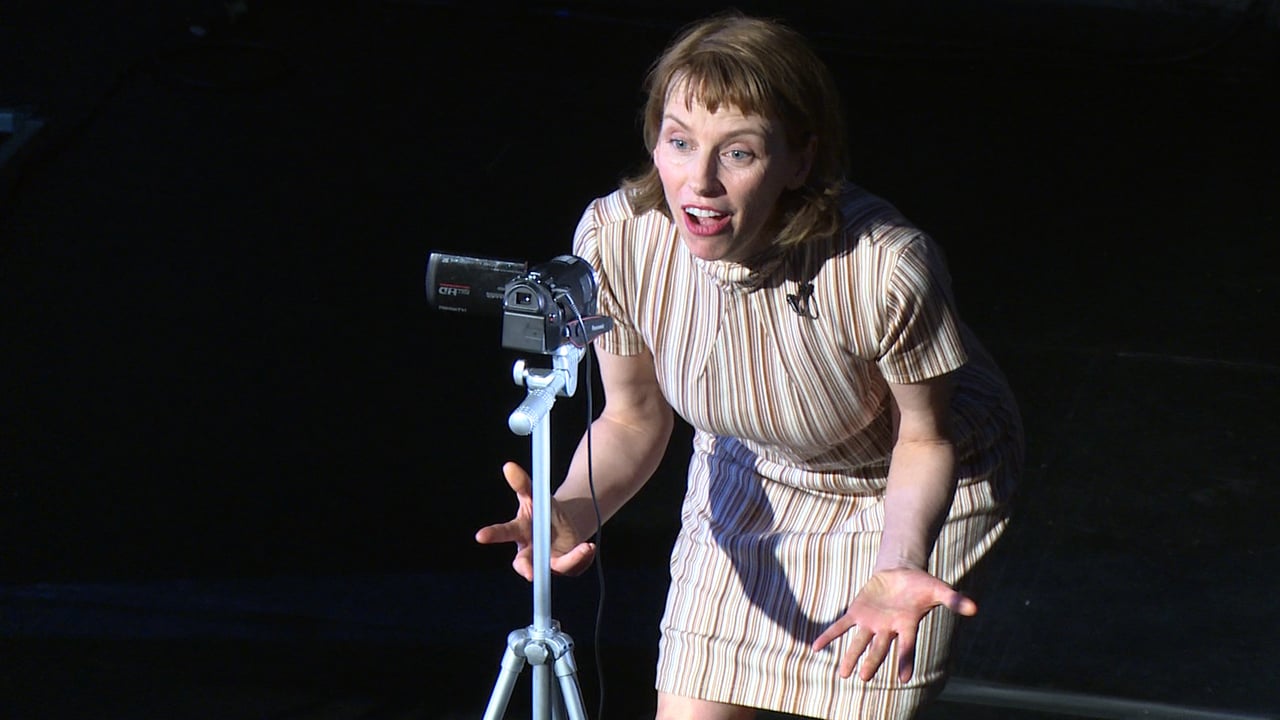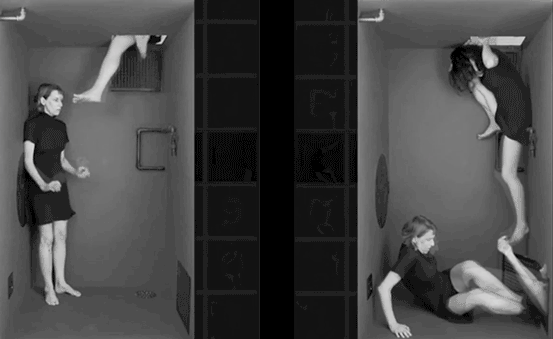“Clytigation” by Michelle Ellsworth Blends Technology and Greek Mythology

Michelle Ellsworth is an artist unlike any other. Her quick, anxious speech dares you to keep up with her, and her art practice is just as ingenious and prolific. The premiere of her Creative Capital project, Clytigation: States of Exception, is a perfect example. A multi-media performance that allows the visitor to wander a theater space at will, Clytigation injects a dose of technology into the Greek myth of Clytemnestra. Writing for Artforum, Claudia La Rocco said that Michelle is “doing some of the most engrossing explorations of how the body and technology coexist and collide.” Suffice it to say that the performance must be experienced in person to really get a sense of how she’s actually accomplishing this; and luckily for New Yorkers, it’s coming to the Chocolate Factory November 11-14.
We caught up with Michelle on the eve of her premiere.
Alex Teplitzky: Can you describe Clytigation and how it relates to Clytemnestra, a Greek mythological figure noted for her troubled relationship with Agamemnon?
Michelle Ellsworth: Clytigation is the sequel to a piece I made several years ago called Phone Homer. Phone Homer is a feminist remix of Robert Fitzgerald’s translation of The Iliad. I moved some language around with my sister Ann Ellsworth to explain what motivated Clytemnestra to kill Agamemnon. The language is arranged around Skype calls between the homebound Clytemnestra and her husband Agamemnon, her friend Penelope, her sister Helen and her lover Aegisthus. In between calls, Clytemnestra navigates her custom-built world wide web with a kinetic alphabet looking for peace through materialism. Clytigation picks up after the murder. Post murder, Clytemnestra is identified as a terrorist (for killing the king) and begins to develop over-the-counter counter-terrorism protocols to avoid surveillance, interpersonal drama, and death. In performance, I demonstrate several of Clytemnestra’s protocols—including hiding in furniture and art, an interpersonal drone and attempts to complicate her identity and location.
Specifically for the title Clytigation—well, Clytemnestra and I have both witnessed the impact that wars have on legal protocols. In Clytemnestra’s case, she had to deal with Athena’s decision at the end of Aeschylus’ Oresteia to introduce the first ever 12-man jury murder trial—thereby ending the period of vendetta-based justice and introducing an era of litigation-based justice. In my case, I witnessed/witness how the post-9/11 wars alter and bend language and laws in the U.S. surrounding the use of drones, military commissions, torture and surveillance.
Alex: Technology permeates your work and often diffuses the relationship between performer and audience member, in works like Clytigation but also with your Choreography Generator website. What has been your interest in mixing technology with performance, and where do you seeing the relationship between the two going in the future?
Michelle: Yes, yes—I’m interested in anything that diffuses relationships. Part of my motivation for using technology is to keep myself sufficiently used-up on stage so I don’t think about the situation I’m in. Some call the situation…performing. I think technology’s ability to consistently fail is exquisite—its instability helps me. I’ve recently started working on a new piece called Post Verbal Social Network: it uses a collection of early industrial technologies (such as pulleys, catapults and hand cranks), and absolutely no electricity, to amplify and augment physical collaboration/communication.
Alex: What were you like as a kid? When did you discover you wanted to be an artist?
Michelle: I remember figuring out when I was 7 that as a Mormon, when I turned 8, I would be baptized and all my sins would be absolved. So for most of my seventh year I lied and swore as much as I possible could. About the same time I organized the neighborhood kids in a production of Sleeping Beauty. I was Sleeping Beauty and I cast my older sister as the back half of the horse and my handsome 16-year-old neighbor as the prince. Even then I remember being more interested in the post-performance snacks (rice crispy treats) than actually performing (and appreciating art’s social and political power).
After seeing the dancers on “The Carol Burnett Show,” I knew I wanted to be a dancer, but I didn’t know I was an artist until I was 17 and was temping in an office job and made myself an elaborate set of fake fingernails sculptures out of scotch tap.
Alex: How has Creative Capital’s support affected this project?
Michelle: Their buy-in (in many fashions) has been profound. Creative Capital encouraged and enabled me to get the team of doctors required to make Clytigation. They are kind, non-invasive collaborators who have had my back and facilitated my risks. Truly, watching the CC team look at other artists while they were talking about their work made me believe more deeply in my efforts (I’m not kidding) and in the planet’s entire artistic enterprise.
Alex: Any advice to artists who, like you, want to think outside the box, or, use inside-the-box thinking to lead to outside-the-box performing…or something like that?
Michelle: I like to complain about the tyranny of the rectangle (specifically in the form of stages and screens), but I do love the box. Spending long hours inside my box expedited the evolution of Clytigation. I find it helpful to make my objections visible and then interact with them in the material world.
Click here to purchase tickets to the upcoming premiere of Michelle’s Creative Capital project, Clytigation, happening November 11-14 at the Chocolate Factory Theater in Long Island City.

